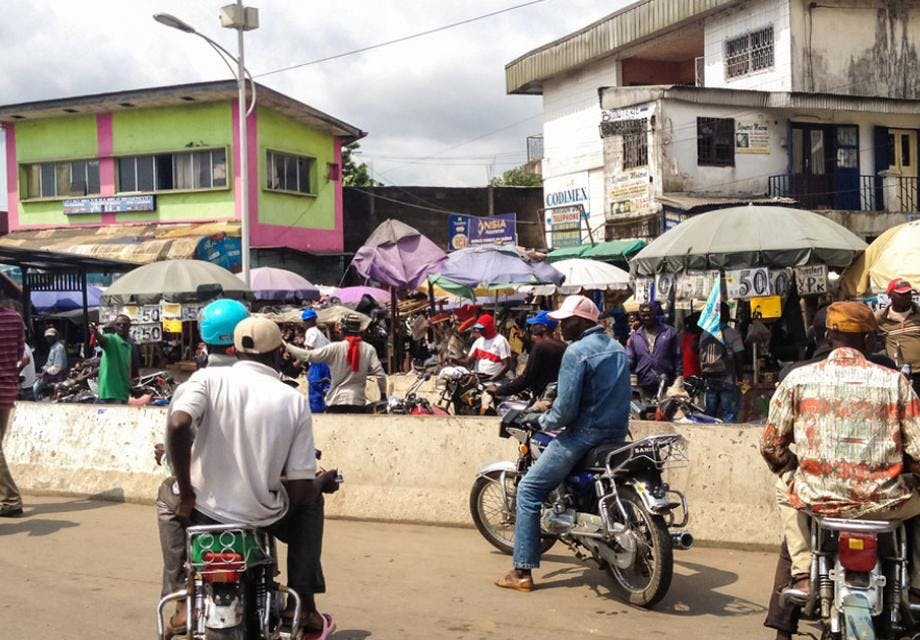Young sex workers and gay men in Cameroon – at-risk, but with no services
Caitlin Mahon
27 June 2019
New study highlights unmet HIV prevention and treatment needs of young key affected populations in Cameroon.
Young key affected populations in Cameroon, including female sex workers and men who have sex with men, face high rates of HIV despite being exposed to less HIV risk compared to their older peers.
A recent study published in the Lancet Child & Adolescent Health, found a high prevalence of HIV among young female sex workers and men who have sex with men across five Cameroonian cities. Female sex workers aged 18 to 24, had an HIV prevalence of 8%, while prevalence was as high as 14% among young men who have sex with men. Although rates were higher among older peers (25 years or more), at 32% for both groups, these results for young people are cause for concern as they highlight issues around access to services and growing epidemics.
Researchers conducted a cross-sectional analysis to better understand the impact of HIV among young female sex workers and young men who have sex with men - including estimating HIV prevalence for the first time. They detail HIV-related individual and structural risk factors and explore HIV service access among young populations in Cameroon.
A population-representative number was recruited from each group. The process started with six sex workers and eight men who have sex with men, who were selected in each of the five cities (Yaoundé, Douala, Bamenda, Bertoua, Kribi) on the basis of their networks and ability to recruit others. These ‘seeds’ then recruited three others, who recruited three others, and so on. All recruits were then asked to take a bio-behavioural survey. The process continued throughout November 2015 to October 2016 ending when 2,255 female sex workers and 1,323 men who have sex with men had taken the survey.
The primary outcome was to measure HIV service engagement, which included questions around whether they had received HIV information in the last six months, had participated in a peer education session, had received free condoms, had tested for HIV in the last year, were part of a community-lead organisation, had an untreated sexual transmitted infection (STI) in the past year, or seen a healthcare professional.
Secondary outcomes assessed HIV and syphilis status and individual-led risk factors, which for sex workers included consistent condom use, difficulty negotiating condom use, number of clients every day and whether they met their partner online. For gay men, individual risk factors included consistent condom use, the number of male sex partners in the last month and whether they met their partner online. Structural level factors included recent experience of social stigma, healthcare and community stigma, arrest, physical abuse, forced sex, and depressive symptoms.
The investigators found a high but similar level of risk behaviours between the two age groups. For example, approximately half of all sex workers had five or more clients on an average day (47% vs 50%). Having two or more sex partners a month was marginally more common among gay men over 25 compared to their younger peers (54% vs. 48%). Consistent condom use was similar between population groups and age groups.
However, coverage of HIV services was much lower among younger populations. Among female sex workers, younger populations were significantly less likely to have spoken with a peer educator, 9% compared to 21% in the older group, or report membership of a community-based organisation, 14% compared to 33%.
Younger men who have sex with men were also less likely to report having had an HIV test in the last year (50% compared to 65%); report recent peer education (19% compared to 31%) or receive free condoms (31% compared to 47%).
For those living with HIV, 43% of young, and 61% of older female sex workers were virally suppressed, and 34% of younger and 42% if older men who have sex with men were virally suppressed.
“Young key population members in Cameroon had shared, disparate gaps in coverage of HIV-related health and prevention services compared with older key populations, which is most likely attributed to a combination of provision and uptake barriers,” commented the authors in their discussion. They also point to a lack of evidence-informed interventions for these groups.
Recent experience of stigma and violence was high in these populations, which suggests a need for interventions that are comprehensive and adaptive, incorporating mental health, violence prevention and support, and sexual and reproductive health services – but that importantly extend beyond health and HIV.
They conclude, “to move forward and change the trajectory of these HIV epidemics among youth necessitates the implementation of innovative, evidence-based, and human-rights affirming HIV prevention and treatment interventions for young MSM and FSWs, even in challenging social and legal contexts.”
Get our news and blogs by email
Keep up-to-date with all our latest news stories and blogs by signing up to the Be in the KNOW news digest.
